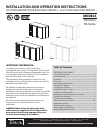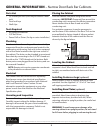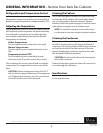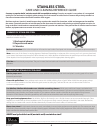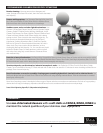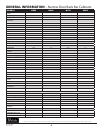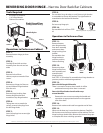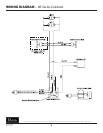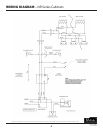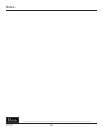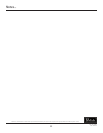
Perlick is committed to continuous improvement. Therefore, we reserve the right to change specications without prior notice
4
Form No. Z2285
Rev. 10.05.10
STAINLESS STEEL
CARE AND CLEANING REFERENCE GUIDE
Contrary to popular belief, stainless steels ARE susceptible to rusting. Corrosion on metals is everywhere. It is recognized
quickly on iron and steel as unsightly yellow/orange rust. Such metals are called “active” because they actively corrode in a
natural environment when their atoms combine with oxygen.
Stainless steels are “passive” metals because they contain other metals like chromium, nickel and manganese that stabilize
the atoms. Chromium provides an invisible passive lm that covers the steels surface acting as a shield against corrosion. As
long as the lm is intact and not contaminated, the metal is passive and stainless. If the passive lm of stainless steel has been
broken, equipment starts to corrode. At its end, it rusts.
ENEMIES OF STAINLESS STEEL
There are three basic things which can break down stainless steel’s passive layer
and allow corrosion to occur:
1. Mechanical abrasion
2. Deposits and water
3. Chlorides
Mechanical Abrasion refers to the things that will scratch a steel surface. Steel pads, wire brushes and scrapers are prime examples.
Water comes out of the faucet in varying degrees of hardness. Depending on what part of the country you live in, you may have hard
or soft water. Hard water may leave spots. When allowed to sit, these deposits will break down the passive layer and rust stainless steel.
Other deposits from food preparation must be promptly removed with an appropriate cleaning agent.
Chlorides are found nearly everywhere. They are in water, food and table salt. Household and industrial cleaners are the worst
oenders.
PREVENTING STAINLESS STEEL RUST
Use the proper tools Use non-abrasive tools to clean stainless steel products. Soft cloths and plastic scouring pads will not harm
the steel’s passive layer.
Clean with polish lines Some stainless steels comes with visible polishing lines or “grain”. When visible lines are present, always
scrub in a motion parallel to the lines. When the grain cannot be seen, play it safe and do not use a circular motion. Polish in a
consistent straight pattern.
Use alkaline, alkaline chlorinated or non-chloride containing cleaners While many traditional cleaners are loaded with
chlorides, the industry is providing an ever-increasing choice on non-chloride cleaners. If you are not sure of chloride content in the
cleaner being used, contact your cleaner supplier. If your present cleaner contains chlorides, ask your supplier if they have an
alternative. Avoid cleaners containing quaternary salt; it also can attack stainless steel and cause pitting and rusting.
Keep your food equipment clean Use alkaline, alkaline chlorinated or non-chloride cleaners at reccommended strength. Clean
frequently to avoid build-up of hard, stubborn stains. The single most likely cause of damage is chlorides in the water. Remember,
adding heat to cleaners that contain chlorides dramatically increases their caustic eect on stainless steel.
Rinse, rinse, rinse! If chlorinated cleaners are used, immediately rinse and wipe equipment and supplies dry. The sooner you wipe
o standing water, especially when it contains cleaning agents, the better. After wiping equipment down, allow it to air dry; oxygen
helps maintain the stainless steel’s passive lm.
NEVER use hydrochloric acid (muriatic acid) on stainless steel!



